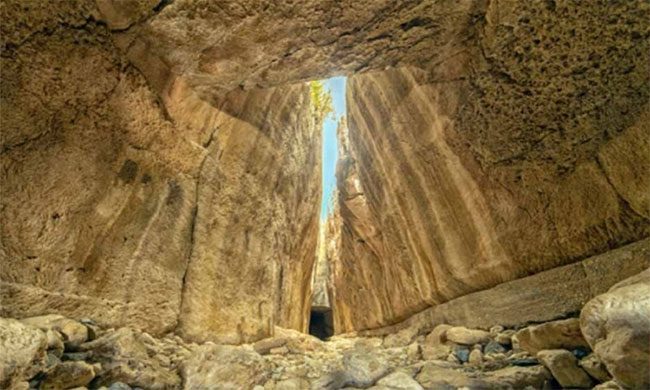The massive tunnel carved through the mountain was built to channel floodwaters threatening the port near the ancient city of Seleucia Pieria, now in modern-day Turkey.
The Titus Tunnel through the heart of the mountain. (Video: Ancient Origins)
The Vespasianus Titus Tunnel is a 2,000-year-old engineering marvel. According to UNESCO, it is one of the most magnificent remnants of the Roman era due to its scale, excellent state of preservation, and architectural and technical features.
The construction of the tunnel began during the reign of Vespasianus, the father of Titus, in the latter half of the 1st century. Although construction continued throughout Titus’s reign (79-81 AD), the project was completed during the rule of Emperor Antoninus Pius in the 2nd century. Researchers are aware of these timelines due to various inscriptions found in the tunnel, according to Ancient Origins. At the tunnel’s entrance, one can find the names of Vespasianus and Titus. Therefore, it is possible that the tunnel was constructed over the reigns of two emperors. Another inscription at the water channel’s outlet bears the name of Antoninus Pius, revealing that the project was completed under this emperor.
Today, the Titus Tunnel is located in Samandag-Cevlik, Turkey. In Roman times, Samandag-Cevlik was known as Seleucia Pieria (Seleucia by the sea). This ancient city was one of four cities in the Syrian tetrapolis, alongside Antioch, Apamea, and Laodicea in Syria.
Seleucia Pieria was an important Roman port city where goods from the East were transferred to Rome. However, the city faced significant challenges due to frequent flooding from the nearby mountains. The floods carried mud as they flowed down, causing the port to become blocked and inoperable. Despite previous emperors ordering the construction of canals, the system proved ineffective, and flooding continued to be a problem.

The Titus Tunnel was designed by engineers from the Roman legion.
To address the flooding issue at its source, Vespasianus decided to build a tunnel by carving through the mountain to redirect the floodwaters. This flood diversion system was based on the principle of blocking the river’s front with a shield and channeling the water through a network of artificial canals and tunnels.
The Titus Tunnel was designed by engineers from the Roman legion and constructed by soldiers, sailors, and prisoners. Upon completion, the Titus Tunnel stretches 1.4 kilometers. Since the entire tunnel was carved through solid rock, it stands out as a remarkable Roman engineering achievement, particularly given the short time frame in which it was completed. Moreover, this man-made wonder has survived to this day with minimal damage. The Titus Tunnel is a testament to Roman ingenuity in addressing the challenges faced by their city.




















































